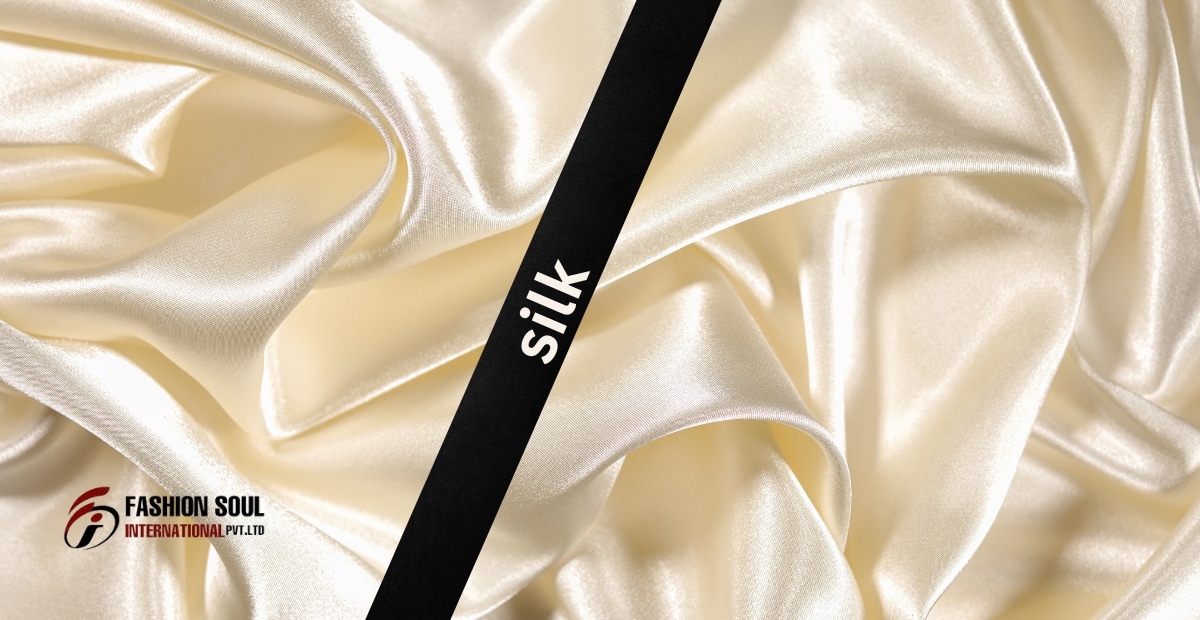Mesh fabric is a super versatile textile that has impacted industries like fashion to even agriculture. This combined features make it a characteristic material in many uses known for its form, durability and breathability. If you have ever asked, “What is a mesh fabrics? properties, uses and manufacturing process, this complete guide will tell you all what you need to know.
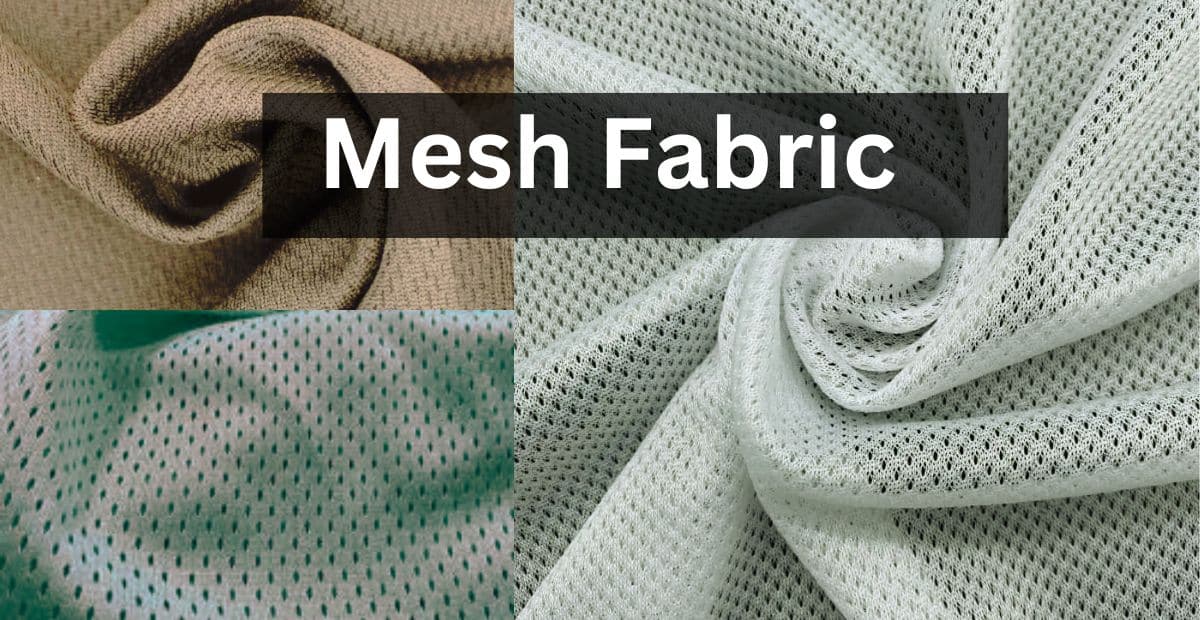
What is Mesh Fabric?
Mesh Fabric is a lightweight, durable material made with an open weave that creates a net-like appearance. The design features evenly spaced holes or pores, providing excellent ventilation, flexibility, and a distinctive aesthetic. Manufacturers craft this fabric using synthetic fibers like polyester or nylon, as well as natural fibers such as cotton. Its design gives it a high degree of versatility, making it ideal for sportswear, industrial purposes, and even decorative applications.
The open construction of fabric allows air to flow freely through it, which makes it a top choice for hot weather or activewear.
Key Properties of Mesh Fabric:
Mesh fabrics is so recognized for its great features, which make it extremely useful and adaptable. Here‘s what makes it special:
1. Breathability:
Mosquito-net like fabrics of an open weave lets air through to keep the material cool and dry; no wonder it is a bestseller among sportswear and shoes.
2. Lightweight and Flexible:
Although thick, fabric remains very lightweight and flexible. This makes it comfortable to integrate into almost any design, whether clothing or accessory.
3. Durability:
Synthetic mesh materials, including nylon or polyester, wear well and have a long lasting durability.
4. Moisture-Wicking Abilities:
Mesh fabric effectively wicks away sweat, ensuring comfort during intense physical activities.
5. Versatile Design:
Mesh fabric comes in a range of aperture sizes and shapes so finds applications from casual clothing to industrial filtration.
Uses of Mesh Fabric:
Like its properties, fabric finds its uses in as varied areas as possible. Its diversity means that it finds application across numerous industries. Read More: polyester fabric.
1. Sportswear and Activewear:
Fabric has become quite ubiquitous in athletic and fitness wear. It is highly versatile for tees, shorts, and leggings due to breathability and moisture-wicking properties.
2. Footwears:
Most running and athletic shoes have mesh upper panels to accommodate ventilation purposes and reduce weight.
3. Industrial Applications:
It is used in industrial applications for filtration, separation and sieving because its net like structure is strong.
4. Bags and Accessories:
Mesh is so very popular in tote bags, backpacks, and other accessories because of its lightweight design and aesthetic appeal.
5. Home Furnishings:
It plays a significant role in household products, ranging from laundry bags to upholstery of furniture.
6. Medical Textiles:
The mesh material is widely used for medical devices and bandage purposes, usually for applications requiring sterility and breathability.
Types of Mesh Fabric:
Some of the fabrics are created for specific uses.
1. Polyester Mesh:
Among other varieties, polyester mesh is most frequently found. Its benefits are great strength and resistance to moisture, giving it ample elasticity suitable for either active-wear or industry use.
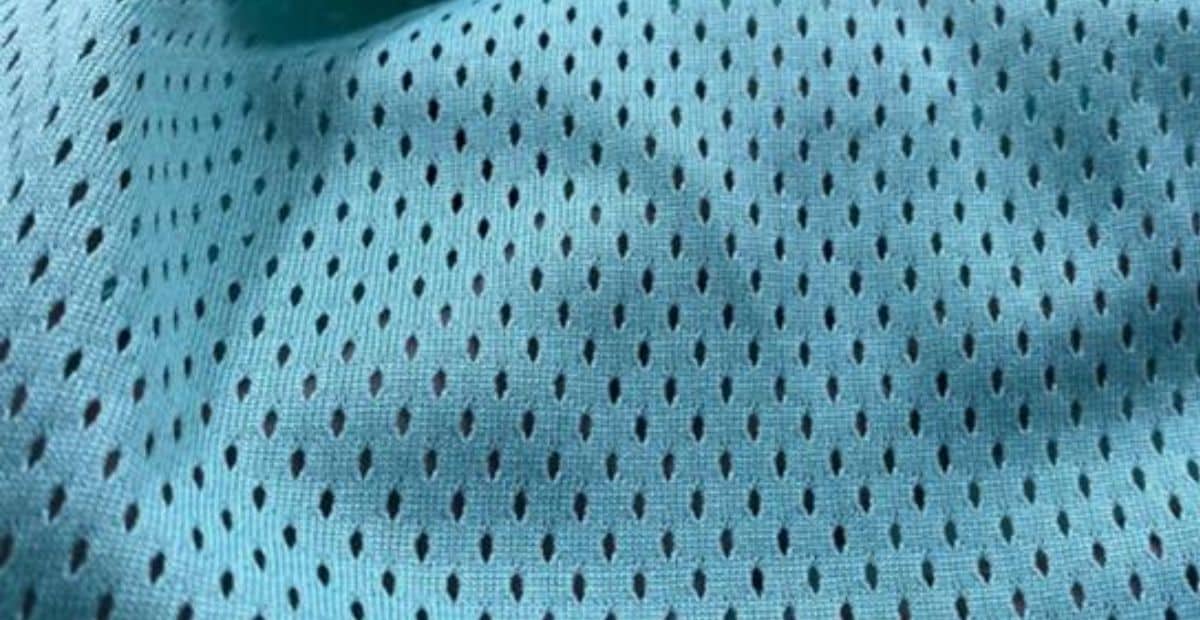
2. Nylon Mesh:
Nylon mesh is quite elastic and resistant. It is thus commonly applied in sports equipment, netting, and even fishing.
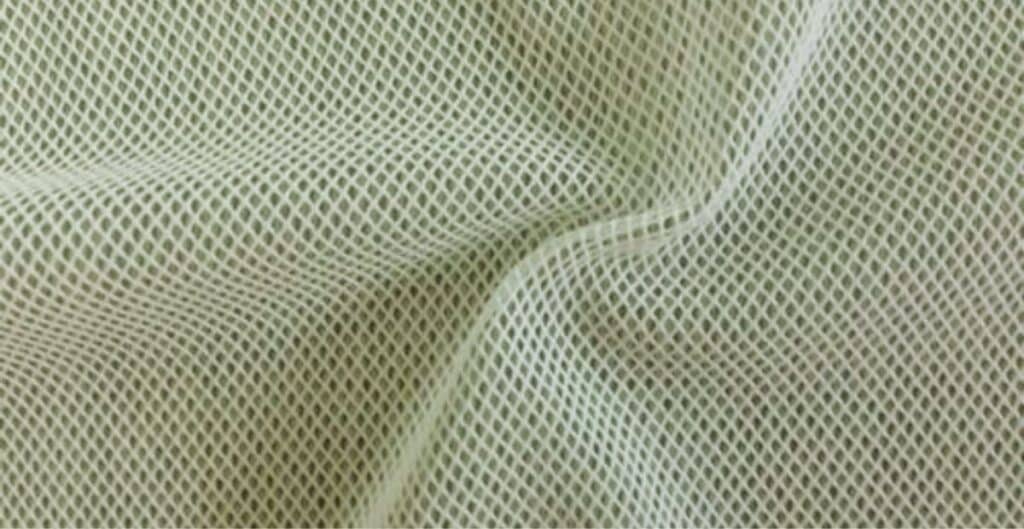
3. Cotton Mesh:
Although rarer, cotton mesh is soft and natural as used in casual wear or eco-friendly products.
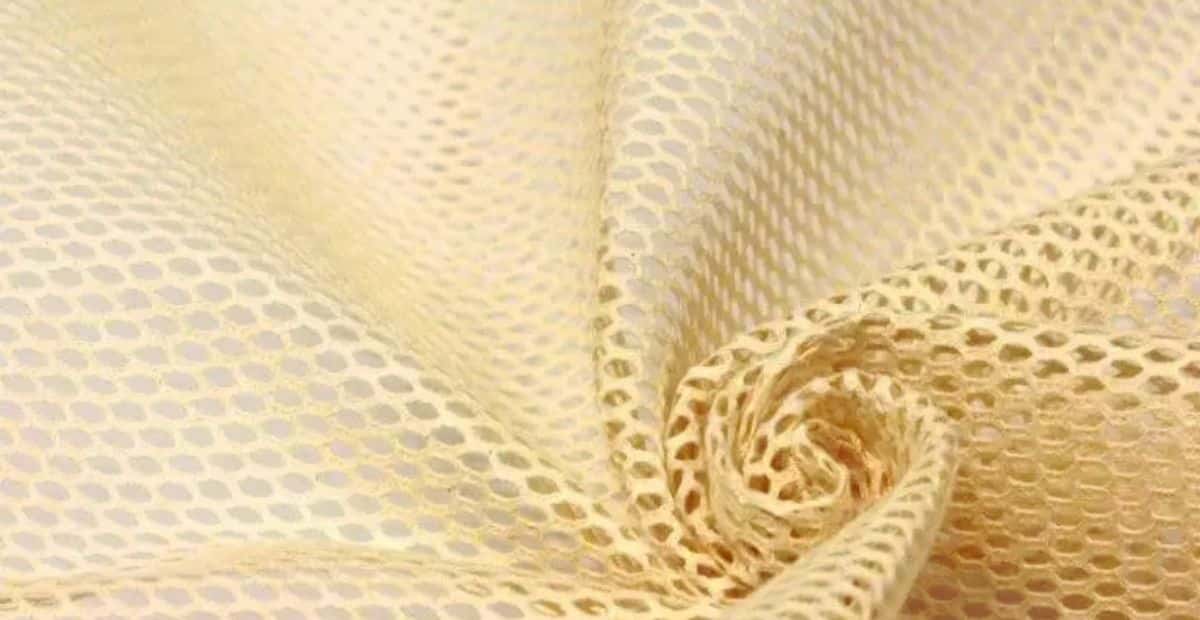
4. Metallic Mesh:
Metallic mesh is very durable and is widely used in either industrial or decorative purposes.
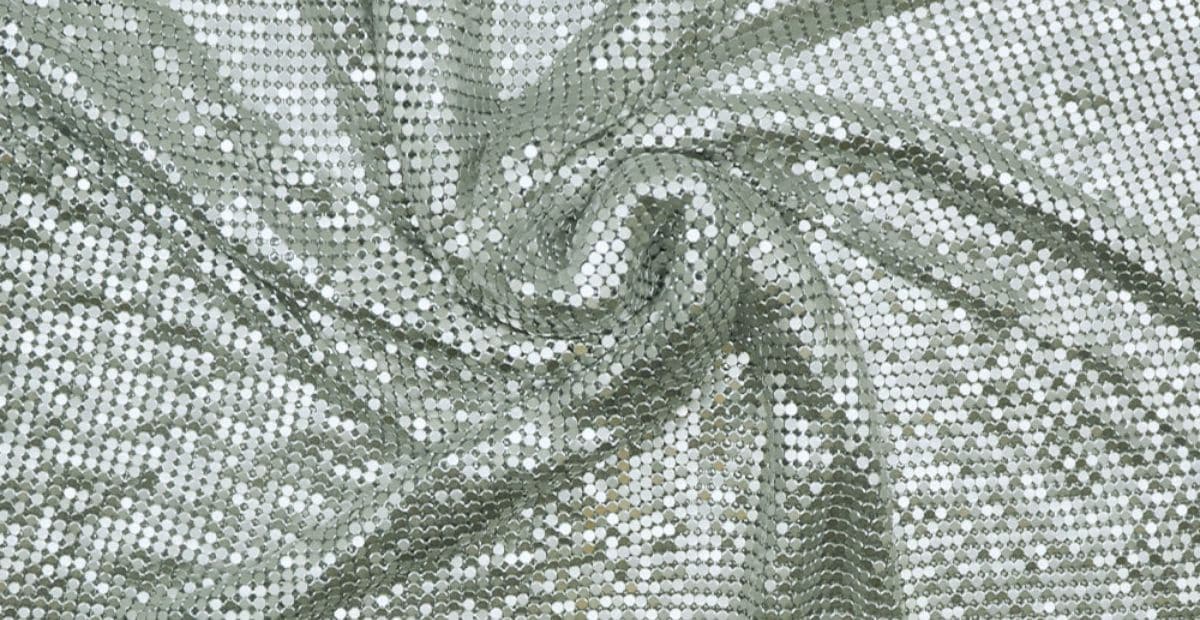
5. Tulle Mesh:
A light, open fabric; used for dresses and veils, among other fashionable items.
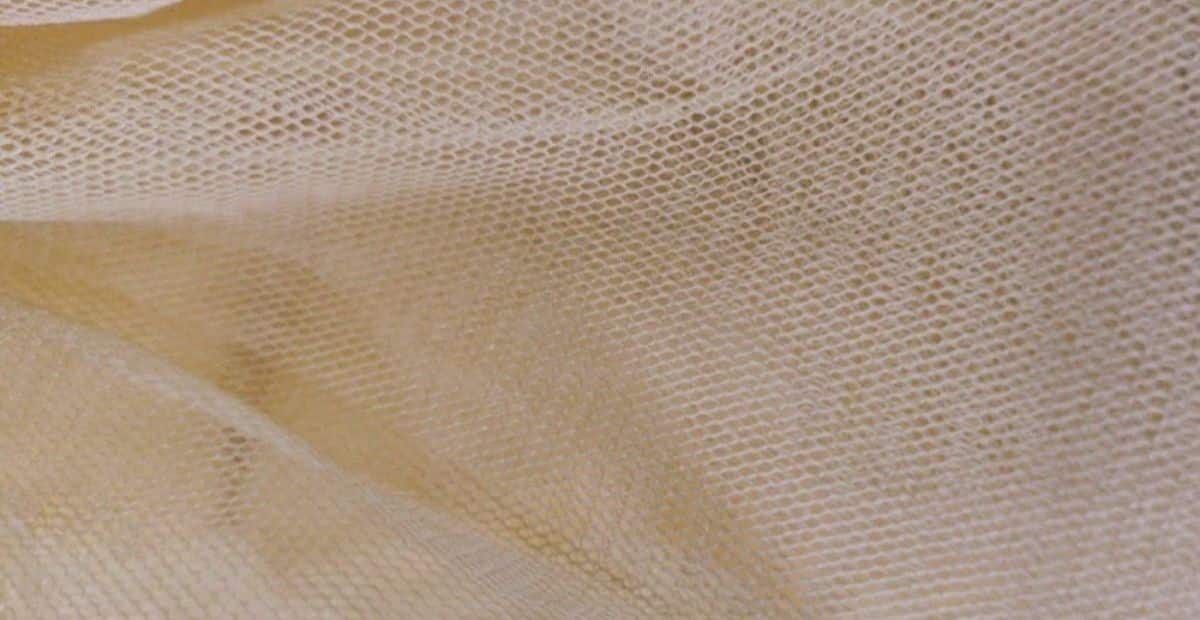
Manufacturing Process of Mesh Fabric:
Knowledge on how the manufacturing process of fabric helps explain its structure and functions. As illustrated below, this is a step guide on how to make fabric. Read More: detailed article Nylon Fabric
Step 1: Material Selection
Selection starts with the raw material, like polyester or nylon or cotton. Synthetic fibers like polyester and nylon are used because of their durability.
Step 2: Yarn Production
Once the material is selected, it is spun into yarn. This is the process of spinning the fibers into thin, flexible threads.
Step 3: Knitting or Weaving
Mesh fabric is produced using either knitting or weaving:
- Knitting forms stretchy mesh structure.
- waving The weave makes it much more rigid, sturdier kind of fabric.
In fact, the yarn surfaces are manipulated to form open spaces through an even, porous pattern.
Step 4: Dyeing and Finishing
This stage has to do with dyeing the fabric to obtain the wanted color. After dyeing, finishing treatments involving enhancement of water resistance or UV protection or even antimicrobial features are applied on the fabric.
Step 5: Cutting and Packaging
Cutting and Packaging Finally, the wire meshed fabric is cut into rolls or sheets and packed for supply to manufacturers or retailers.
Advantages of Mesh Fabric
This is the reason most industries have a default textile in fabric:
Versatility: Applied to almost countless uses-from fashion to medicine.
Comfort: Thin and breath-takingly light, ideal for an active or warm setting.
Durability: Long lasting and resistant to harsh conditions.
Eco-Friendliness: Many meshes are produced from recycled materials.
Challenges with Mesh Fabric
Mesh fabric has several advantages, but these advantages do bring alongside some challenges:
- Fragility: Fine mesh type fabrics such as tulle easily tear.
- Cost: Fine fabrics are pricey to make.
- Limited Insulation: Fabrics do not support exposure in cold climatic regions. Read More: detailed article Woolen Fabric
How to Care for Mesh Fabric
Care for meshed fabric to last long. Pay attention to the following tips
- Hand Wash When Possible: Mild detergent and no scrubbing.
- Avoid heat: Excessive heat melts nets, so avoid using a dryer. Line drying works better.
- Store Carefully: To store it carefully, gently fold the net to prevent crumpling or tearing.
Conclusion
Indeed, mesh fabric is revolutionizing the face of textile. It offers great breathability, hardness, and versatility, thus making it very ideal for application across industries. Sportswear, home furnishing, and industrial application use it time and again for the effectiveness that fabric brings about. Knowing what fabric is, its properties, uses, and manufacturing process will make one appreciate it a lot more. From the lightweight design to the very adaptability, mesh fabric continually shapes the future of textiles. If you are considering including fabric in your projects or wardrobe, then you are doing something great. The benefits are unmatched, and it will meet your requirements and exceed expectation. Read More: detailed article Cotton Fabric.
FAQs
Various materials, including polyester, nylon, and cotton, make up mesh fabric?
A variety of materials, including polyester, make up fabric. nylon, and cotton. Synthetic fibers like polyester and nylon are most common due to their strength, durability, and lightweight properties.
Tulle mesh consists of fine, lightweight netting, and people commonly use it in wedding veils, dresses, and decorations.?
Tulle mesh is a lightweight, fine mesh fabric often used in wedding dresses, veils, tutus, and decorative items. It has a delicate and airy appearance, making it suitable for elegant designs.
Designers use mesh fabric in cold weather clothing for layering or ventilation purposes.?
Fabric is not ideal for cold weather as it lacks insulation. However, People commonly layer it with other materials to create breathable yet warm clothing.

